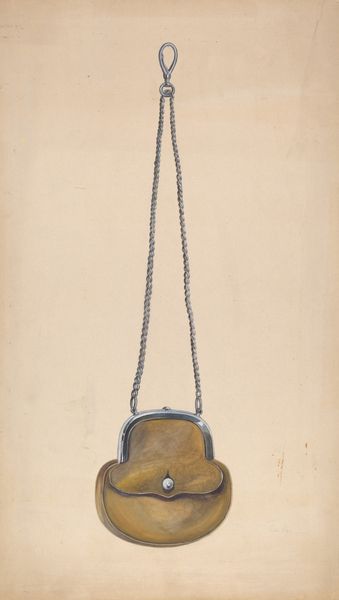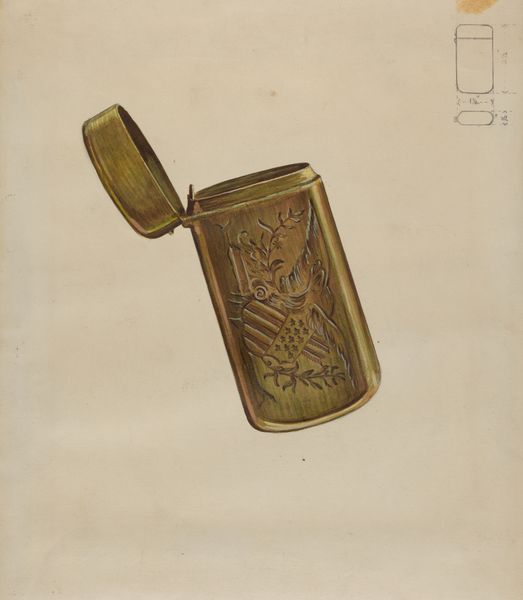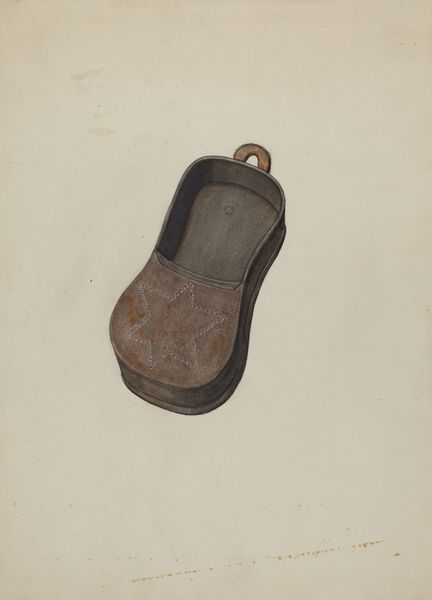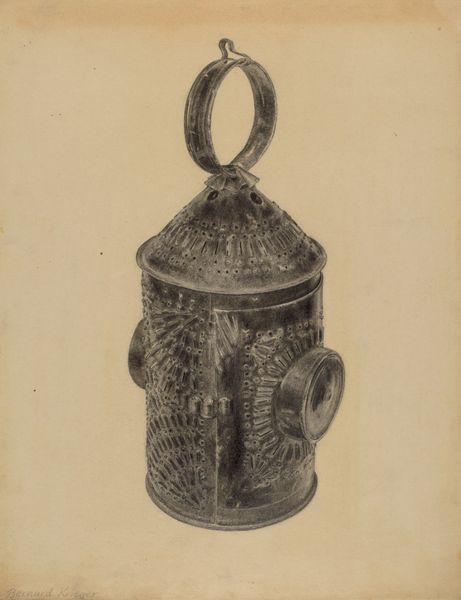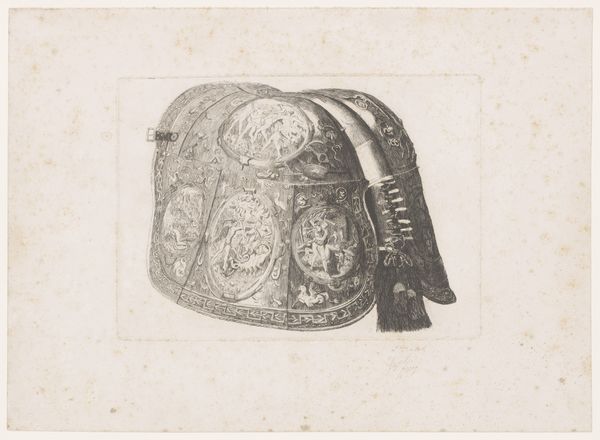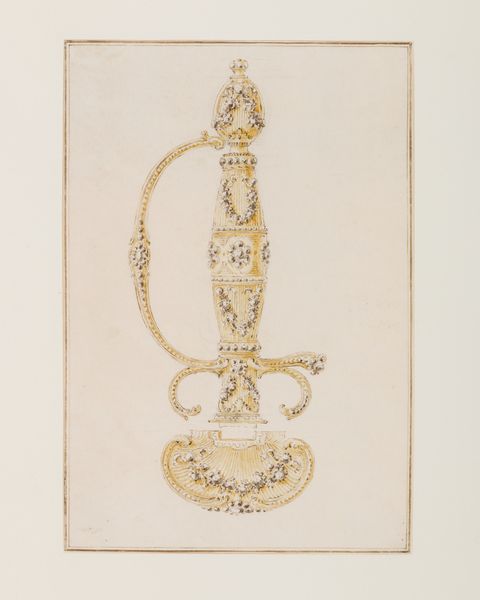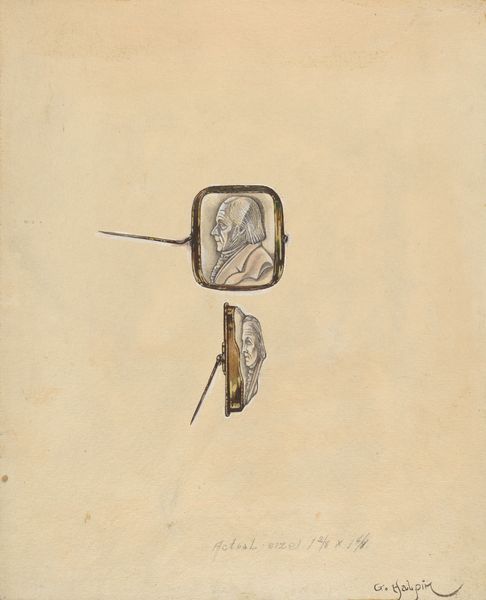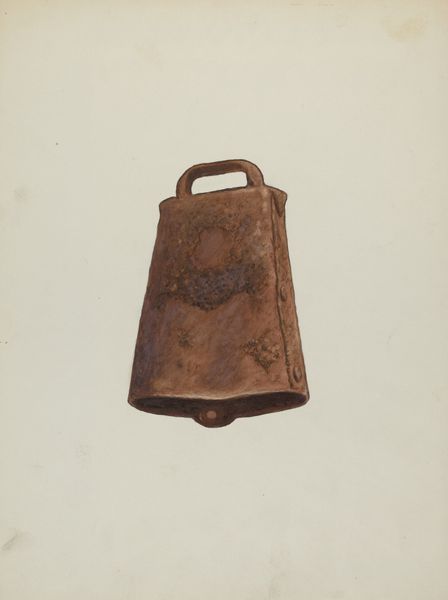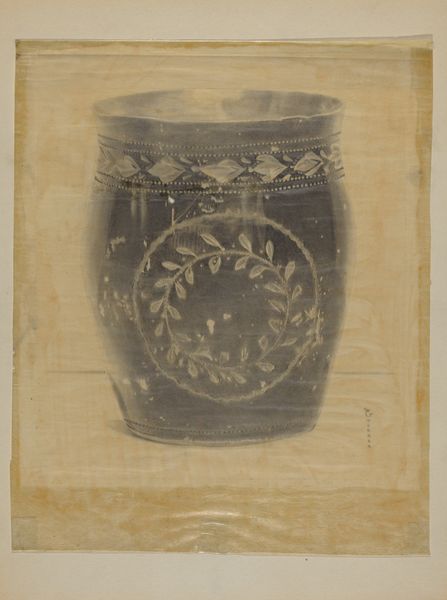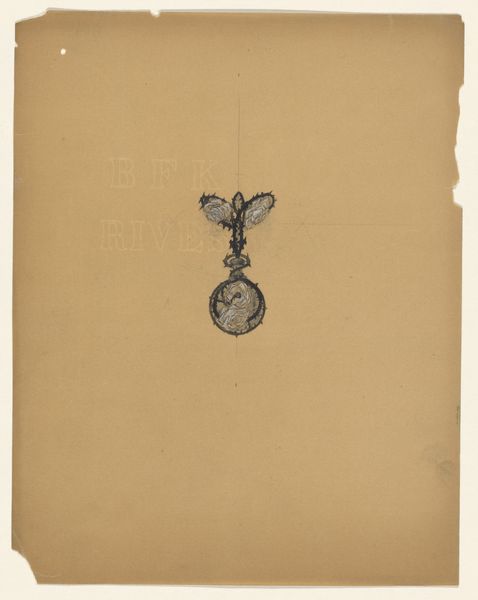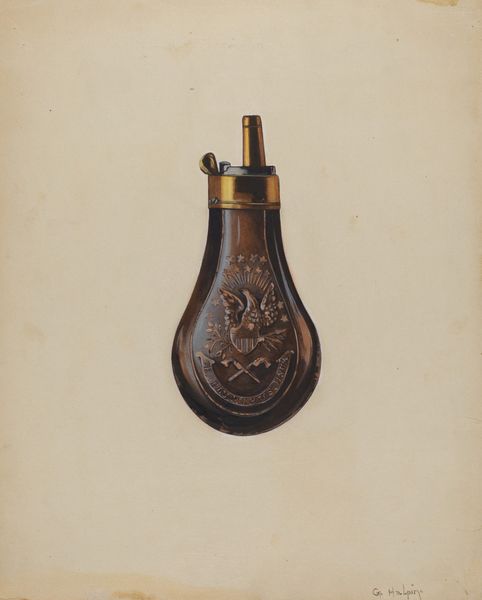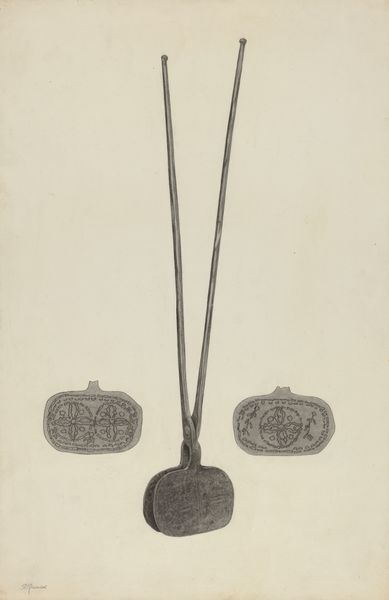
drawing
#
drawing
#
geometric
Dimensions: overall: 36 x 27.9 cm (14 3/16 x 11 in.) Original IAD Object: 3 1/2" long; 2 1/2" wide
Copyright: National Gallery of Art: CC0 1.0
Curator: Here we have Ella Josephine Sterling's "Card Purse," dating from about 1936. It's rendered as a drawing. Editor: It's fascinating. There's something so delicate and restrained about this representation. The drawing captures a metal object with such lightness. It appears functional, while at the same time, its elaborate design transforms something as mundane as a card purse into a work of art. Curator: Agreed. What's really interesting to me is Sterling's focus on this functional object. During the 1930s, there was a resurgence of interest in craft and design. To see this attention to an everyday item highlights that elevation of the functional towards a more aesthetic and socially relevant position. You can tell, examining the linework here, that the details of production matter. Editor: It makes me wonder about the social role this card purse may have played. A card purse becomes a symbolic object that hints at class, fashion, and access to commerce during a financially restrictive time in the US. What was this piece intended to convey? Curator: And look closer – an eagle perched on a leafy branch decorates it. Was Sterling drawn to this design herself, or was it commissioned and representative of someone's taste? Editor: It reminds us that artwork, especially functional pieces, always exists in a socio-political context. The national symbolism could imply more complex and hidden meanings. Curator: These works are often overlooked because of the material limitations associated with craft, or domestic art forms. But, looking carefully at process, skill, labor, and even access— these elevate an object such as this one into something special. Editor: It leaves one reflecting on how we, in turn, as cultural institutions frame everyday design into significant historical works that represent society's aspirations, or political identity, at given periods. Curator: Absolutely. Objects that were originally accessible become inaccessible relics through the mere fact that museums become their new context. Editor: Well, let's hope we have inspired listeners to consider that relationship today.
Comments
No comments
Be the first to comment and join the conversation on the ultimate creative platform.
